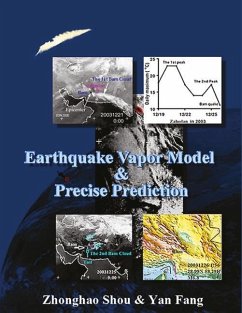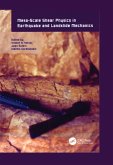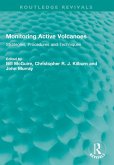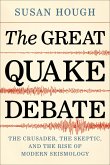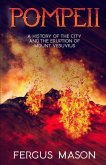Earthquakes are thought to defy predictions. Indeed, numerous prediction methods have been attempted by generations of geologists. These methods are based on correlations of phenomena (such as animal behavior, tidal behavior, radon generation, ground shift, electromagnetism, foreshocks) with earthquakes. However, none of these methods have yielded useful predictions, because they are based on correlations instead of mechanisms. That is, an impending earthquake may or may not lead to these putative precursors, and phenomena other than earthquakes may also cause these phenomena. In this book I propose a new theory - earthquake vapor theory - that can be used to generate precise and accurate earthquake predictions. This theory proposes that when a huge rock is stressed by external (including man-made) forces, its weak parts break first. This induces crevices, and ground water percolates through crevices. Water expansion, contraction, friction and erosion further weaken the rock. Friction during ground movement heats the ground water and eventually generates vapor at high temperature and pressure. This vapor erupts from an impending hypocenter to the surface through the crevices and exits via one or more nozzles. Erupting vapor can rise up to form an "earthquake cloud" when encountering cold temperature at a higher altitude. Alternatively, erupting vapor can form a geothermal eruption ("geoeruption") as its heat dissipates a preexisting cloud. Earthquake clouds and geoeruptions can be differentiated from other geological or weather phenomena because they suddenly appear, are vapor-based, have a fixed source, and display high temperature and high pressure. The location of eruption predicts the epicenter, the amount of vapor predicts the magnitude, and the time after a complete eruption empirically predicts the time of the earthquake within days. Using this theory, I predicted 63 independent earthquakes to the United States Geological Survey from 1994 to 2001. Each prediction has a defined time, area, and magnitude window. More than 60% of these predictions are correct. An evaluation on this set of predictions shows that random guesses will have only a chance of 0.002 to achieve the same level of success. I also made over 1500 predictions to the public through my website from 1999 to 2007. After my successful prediction of the M6.8 Bam Iran earthquake, the United Nations published my paper "Bam Earthquake Prediction & Space Technology" in its 2004 yearbook (Seminars of the United Nations Programme on Space Applications, 16), and shared this book to all its member states in early 2005. I also secured a patent "Method of precise earthquake prediction and prevention of mysterious air and sea accidents" (Patent US 08068985B) in 2011. With better satellite, temperature, and earthquake data, my method can achieve an even higher level of success. I hope that this book will help the mankind to predict all devastating earthquakes.
Hinweis: Dieser Artikel kann nur an eine deutsche Lieferadresse ausgeliefert werden.
Hinweis: Dieser Artikel kann nur an eine deutsche Lieferadresse ausgeliefert werden.

